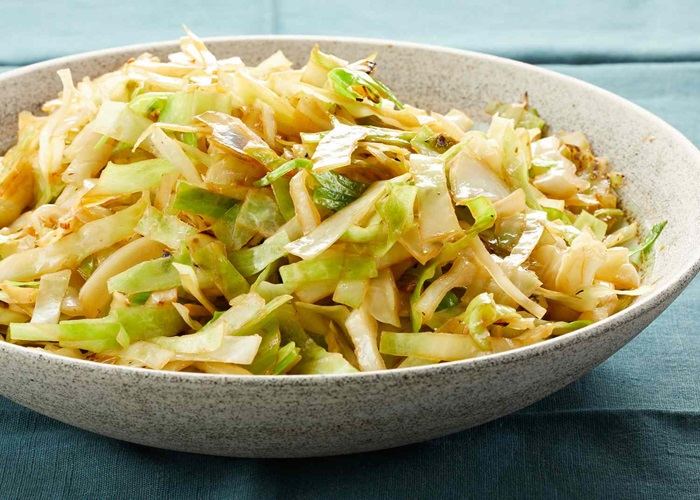Asian cabbage, also known as Chinese cabbage or bok choy, is a versatile vegetable that plays a central role in many Asian dishes. It has a mild, sweet flavor and crisp texture that can enhance a wide variety of recipes. Whether stir-fried, steamed, or used in soups, Asian cabbage brings freshness and nutrition to the table. Learning how to cook Asian cabbage.
History and Cultural Significance
Asian cabbage has been cultivated for thousands of years, particularly in China. It holds significant cultural importance in various Asian countries. In Chinese culture, it symbolizes wealth and prosperity, often featured prominently during festivals and celebrations. The vegetable’s popularity has spread across Asia, becoming a staple in Korean, Japanese, and Southeast Asian cuisines. Its adaptability makes it suitable for both simple home-cooked meals and elaborate feasts.
Nutritional Benefits
Asian cabbage is not only delicious but also highly nutritious. It is low in calories and rich in vitamins and minerals. High in vitamin C, it boosts the immune system, while vitamin K supports bone health. Additionally, it contains antioxidants and fiber, which aid digestion and promote overall well-being. Incorporating Asian cabbage into your diet can contribute to a balanced and healthy lifestyle.
Preparing Asian Cabbage
Selecting the Right Cabbage
Choosing the right Asian cabbage is crucial for achieving the best results. Look for heads that are firm and heavy for their size. The leaves should be fresh, vibrant green, and free from yellowing or wilting. If you’re buying bok choy, opt for stalks that are crisp and white. Avoid any with soft spots or blemishes. Fresh, high-quality cabbage will yield better flavor and texture in your dishes.
Cleaning and Cutting
Before cooking, thoroughly clean the cabbage to remove any dirt or debris. Separate the leaves and rinse them under cold running water. For larger varieties like napa cabbage, cut the head into quarters and remove the core. Then slice the cabbage into bite-sized pieces. Bok choy can be chopped into smaller sections, separating the stems from the leaves if desired. Proper preparation ensures that the cabbage cooks evenly and retains its crunch.
Cooking Methods
Stir-Frying
Stir-frying is one of the most popular ways to prepare Asian cabbage. This method locks in flavors and preserves the vegetable’s crispness. Heat a wok or large skillet over high heat and add a small amount of oil. Once hot, toss in minced garlic and ginger to release their aromas. Add the cabbage and stir-fry quickly, tossing frequently to ensure even cooking. Season with soy sauce, oyster sauce, or sesame oil for added depth. Serve hot as a side dish or incorporate into stir-fries with meat and vegetables.
Steaming
Steaming is a gentle cooking method that retains the cabbage’s nutrients and delicate flavor. Place the prepared cabbage in a steamer basket over boiling water. Cover and steam for about 5-10 minutes, depending on the thickness of the leaves. Check periodically to avoid overcooking. Drizzle with a light dressing of soy sauce, rice vinegar, and toasted sesame seeds for an elegant finish. Steamed cabbage pairs well with grilled meats or fish.
Boiling
Boiling is another simple way to cook Asian cabbage. Bring a pot of water to a boil and add the prepared cabbage. Cook for 3-5 minutes until just tender. Drain and refresh under cold water to stop the cooking process. Boiled cabbage can be served with a dipping sauce or used in soups and stews. It adds a refreshing element to heartier dishes.
Braising
Braising involves simmering the cabbage in a flavorful liquid, resulting in a tender and deeply flavored dish. In a pan, sauté onions and garlic until fragrant. Add the cabbage and pour in a broth or stock. Simmer gently until the cabbage is soft and the liquid has reduced slightly. Finish with a splash of soy sauce and garnish with green onions. Braised cabbage can be a comforting side dish or part of a main course.
Pickling
Pickling is a traditional method that preserves cabbage and enhances its flavor. Combine vinegar, sugar, salt, and spices in a pot and bring to a boil. Pour the hot brine over thinly sliced cabbage in a jar. Let it cool before sealing and refrigerating. Pickled cabbage can last for weeks and adds a tangy twist to sandwiches, salads, or as a condiment.
Recipes and Variations
Stir-Fried Bok Choy with Garlic
Ingredients
4-6 baby bok choy
2 tablespoons vegetable oil
3 cloves garlic, minced
1 tablespoon soy sauce
Salt and pepper to taste
Instructions
Clean and trim the bok choy.
Heat oil in a wok over high heat.
Add garlic and stir-fry until fragrant.
Add bok choy and stir-fry for 2-3 minutes.
Pour in soy sauce and season with salt and pepper.
Serve immediately.
Napa Cabbage Soup
Ingredients
1 medium napa cabbage, chopped
4 cups chicken or vegetable broth
1 carrot, sliced
1 onion, chopped
2 cloves garlic, minced
2 tablespoons soy sauce
Salt and pepper to taste
Instructions
In a large pot, sauté onion and garlic until softened.
Add carrot and cabbage, stirring to combine.
Pour in broth and bring to a boil.
Reduce heat and simmer for 20-30 minutes.
Season with soy sauce, salt, and pepper.
Enjoy as a comforting soup.
Conclusion
In conclusion, cooking Asian cabbage is an enjoyable and rewarding experience. From stir-frying to pickling, each method highlights different aspects of this versatile vegetable. Its rich history and cultural significance add depth to every dish. By exploring various cooking techniques and recipes, you can discover new flavors and create memorable meals. Whether enjoyed as a side dish or incorporated into complex dishes, Asian cabbage offers endless possibilities for culinary creativity. Embrace the journey and savor the unique tastes and textures that make Asian cuisine so beloved.
Related topics:


